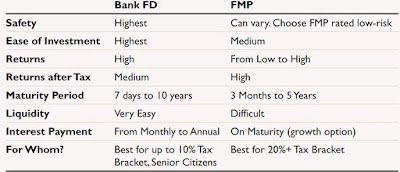Back in 2018, Amit and Shalini, both IT professionals in
their early forties, reached out to us through a referral from one of our
existing clients. Based in Bangalore, the couple had some investments, but
lacked a structured plan for key life goals such as their child’s education,
retirement, and health coverage.
The Starting Point
Our initial assessment revealed gaps in their financial
safety net and future planning:
- They
had no health insurance coverage, leaving them vulnerable to unforeseen
medical expenses.
- Their
child, who was 10 years old at the time, had no dedicated corpus for
higher education.
- Their
retirement plan was insufficient, given their lifestyle needs and the
uncertainty in the IT sector.
Step 1: Securing Health Coverage
The first step was to protect their family against potential
medical emergencies. We helped them secure a ₹25 lakh health insurance policy
with an unlimited recharge facility. This ensured that they wouldn’t need to
dip into savings or investments for healthcare expenses, creating a crucial
financial cushion.
Step 2: Planning for Their Child’s Higher Education
Their son’s higher education was only a decade away, so we
designed a focused investment strategy:
- An
aggressive SIP portfolio was initiated to maximize growth in the
early years.
- We
rebalanced the portfolio periodically, transitioning from aggressive funds
to hybrid funds as the market reached higher valuations.
- Dynamic
Asset Allocation funds were used for lump-sum investments, ensuring
stability and alignment with their four-year goal horizon.
By consistently following this approach, we’ve grown the
education corpus to nearly ₹60 lakh as of today. This fund will be ready for
use within the next year, perfectly aligned with their son’s academic timeline.
Step 3: Building Their Retirement Corpus
While Amit and Shalini had a decent provident fund corpus,
it was clear they needed to augment it to avoid a shortfall of ₹4 crore if they
retired at 53. This concern was amplified by the volatile nature of IT jobs,
where layoffs due to AI advancements and a younger workforce are common.
In 2018, we began a targeted retirement SIP of ₹75,000 per
month. Over the years, we’ve gradually increased their contribution to ₹1.5
lakh per month. This disciplined approach, combined with strategic fund
selection and periodic reviews, has kept them on track.
By 2028, Amit and Shalini are projected to reach their
financial milestone of ₹4 crore in mutual funds. Along with other liquid
assets, their total wealth is estimated to hit ₹10 crore, providing them with
the security and freedom to enjoy their retirement without compromise.
Lessons from Amit & Shalini’s Journey
- Start
Early and Stay Disciplined: Time and consistency are key to building
wealth.
- Adapt
to Life Goals: Financial planning isn’t static—rebalancing and
re-evaluation are critical.
- Health
First: Adequate health coverage safeguards your investments from being
derailed.
- Plan
for the Unexpected: Industry risks, like those in IT, should be
factored into long-term plans.
Amit and Shalini’s story highlights how proactive planning
can turn financial uncertainty into confidence and freedom. Their journey is
proof that it’s never too late to take charge of your future.
At DhanCreators, we believe in turning aspirations into achievements. Our mission is clear and ambitious—to create 500+ Crorepati families by 2034. This isn’t just about accumulating wealth; it’s about enabling families to live their dreams, secure their futures, and leave lasting legacies.
We understand that every journey is unique. Whether your goal is to fund your child’s education, retire early, build generational wealth, or simply gain financial freedom, we are here to be your Saarthi—your guide and partner in this journey.
All you need to do is share your goals and dreams with us. We’ll work closely with you to create a tailored financial roadmap that aligns with your aspirations. With expertise, discipline, and regular reviews, we’ll ensure you stay on track, no matter the challenges along the way.
Your dream of financial freedom is closer than you think. Let DhanCreators help you turn it into reality.
Reach out to us today and take the first step toward your dream life!
Call us # 9998554836 / 9599956770 for more details.
Visit us www.dhancreators.com












